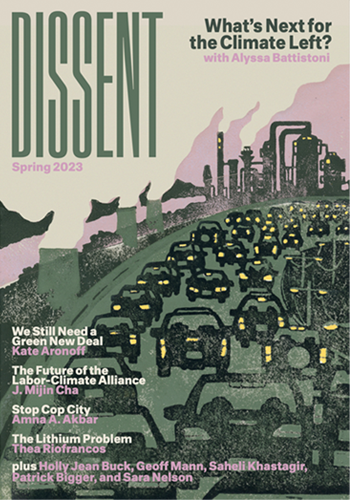PRESENTED BY ANGRY CANADIANS
In today’s newsletter, I could discuss how Semafor’s corrupt polluter schmoozer Steve Clemons lost his shit when climate protesters disrupted his lovefest with Sen. Joe Manchin (D-Coal) on Tuesday. Or how yesterday, fossil-fueled wildfire smoke forced the White House to cancel its Pride party, even as climate activists gathered out front to protest Joe Biden’s sacrifice of Appalachia.
I could mention that the U.S. Senate is filled with climate chickens like Sens. Brian Schatz (D-Hawaii), Sheldon Whitehouse (D-R.I.), Elizabeth Warren (D-Mass.), and Martin Heinrich (D-N.M.), unwilling to call for a declaration of climate emergency even as the skies turn orange. Ostensible climate hawks Schatz, Whitehouse, and Heinrich all voted for the dirty debt deal that greenlit the Mountain Valley Pipeline (even though their votes weren’t needed for passage).
I could discuss how Siberia is burning, that El Niño has returned, that Fox News is now denying smoke, or how much of Guam is still without power weeks after Typhoon Mawar.
I could even discuss Shawn Mendes’s latest carbon-pop single:
But let’s not!
Instead, let’s discuss the Spring 2023 issue of Dissent, which asks, “What’s Next for the Climate Left?”
Amna Akbar gives a great introduction to the fight against Atlanta’s Cop City, and its connection to other fights against the petro-carceral state.
Alyssa Battistoni discusses the path from the failure of the Waxman-Markey climate bill through the Green New Deal to Biden’s Inflation Reduction Act, and concludes, with a nod to Naomi Klein:
There are, after all, few political issues that will remain untouched by warming temperatures, or by the scale of social transformation required to confront the challenge of reducing emissions. Climate, in other words, still changes everything. Our thinking, and our action, will have to keep up.
Kate Aronoff delves into the Inflation Reduction Act, and “the invitation it presents for organizers to create proof of concept for public power as an alternative to for-profit energy.” As usual, Kate clearly sees the landscape: “For better and for worse, the product of that tortured Beltway compromise is now the ground on which something more expansive and democratic might be built.”
Geoff Mann rips apart the utter failure of planetary capitalist climate governance.
Patrick Bigger and Sara Nelson explain why the growing Western megafires have been feeding the reactionary right instead of the climate left:
The West is not the only place where socio-ecological breakdown, rooted in decades of environmental degradation and state abandonment, is fueling reactionary politics. From fisheries in New England to Midwestern farmland and areas struck by water crisis in the Southeast, the contradictions of the end of cheap nature are reaching critical levels.
Saheli Khastagir exposes General Electric as a privateer using U.S. “climate diplomacy” to subsidize its fossil-fuel expansion into developing countries.
Holly Jean Buck offers a measured defense of some forms of carbon capture and sequestration technology.
Ewan Gibbs reviews The Rig, an allegorical Amazon Prime miniseries “that confronts economic precarity and workplace danger from aboard a North Sea oil installation in its final days of production.”
J. Mijin Cha writes how the IRA was a lost opportunity for the necessary work of building a climate-labor alliance:
The shaky foundations of the IRA make it all the more important that labor and climate organizers remain engaged with the process of implementation.
And Alyssa interviews Thea Riofrancos on the “lithium problem.” If we decarbonize transportation by replacing oversized gas-powered cars with oversized rechargeable electric vehicles, that means a nearly inconceivable amount of new extraction of “critical minerals” like lithium: “Based on current consumption patterns, for example, U.S. demand for the lithium used in batteries would require three times the existing global supply—which comes primarily from Australia, Latin America, and China—by 2050.”
Thea is an expert on Latin American politics and the global extraction economy. Moreover, she is one of our best ecosocialist thinkers about how power and politics truly work:
“When I say that the left needs its own models, it’s because models are a political tool, inflected by ideologies, and shaped and funded by economic interests that are served by their findings. We shouldn’t cook the books, but we should ask different questions, make different assumptions, identify distinct parameters, and show, empirically, that different futures are possible and have some quantitative weight behind them.”
Seriously, what a bounty!
Some of the articles are behind a paywall, but a digital subscription to Dissent is only $19.95 a year, which is a lot better deal than an annual subscription to Hill Heat.
On the other hand, Dissent doesn’t ensure drawings of insane cats reach your inbox:
All of us live in the same today.
Different futures are possible.
Thanks for subscribing and spreading the word. Follow me if you dare—@climatebrad@mastodon.social and @climatebrad.hillheat.com on BlueSky.






Good folks at Dissent Mag.
What are we dying for? for the Church of the Dead God
https://thespouter.substack.com/p/the-church-of-the-dead-god
One of your best ever, Brad. Which is saying a lot.